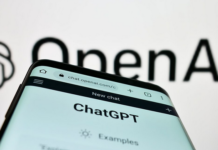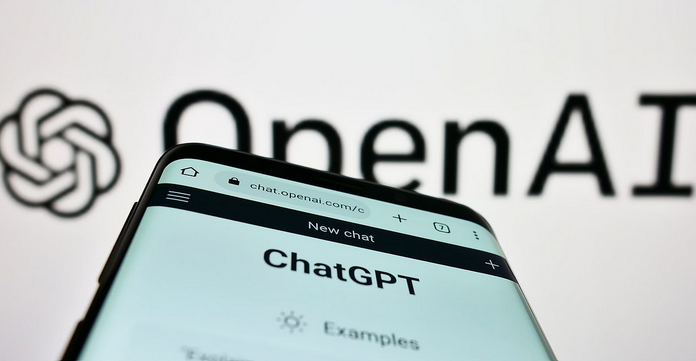ChatGPT-5: The Next Frontier in AI – Release Date, Features, Pricing, and Everything You Need to Know

Artificial Intelligence continues to shape our world, not just in small ways like managing our emails or creating to-do lists, but in grand leaps, from virtual customer service representatives to AI-powered medical diagnostics. With OpenAI’s announcement of ChatGPT-5, there’s a buzz of excitement and anticipation. Could this be the model that pushes generative AI to the next level?
In this article, we’ll dive deep into everything we know about ChatGPT-5, from anticipated features to release predictions, and what it could mean for various industries and everyday users. Let’s break down the hype into digestible (and hopefully fun!) pieces.
What is ChatGPT-5? The Basics Explained
ChatGPT-5, the latest in OpenAI’s series of generative AI models, is expected to be a massive leap forward from its predecessors. Like GPT-4, this model is built on transformer architecture – essentially, it’s like a turbocharged AI engine designed to handle natural language processing tasks in more sophisticated ways. What’s special about ChatGPT-5, however, is that it promises to be not just a better version of GPT-4, but a transformative upgrade that could redefine the way AI models interact with the world.
While ChatGPT-4 introduced multimodal capabilities, handling text and images, ChatGPT-5 is expected to push these boundaries even further. It’s likely to support audio and video inputs, making it a potential powerhouse for industries that rely on diverse data formats. From analysing medical images to interactive e-learning and virtual customer support, ChatGPT-5 could open doors to a multitude of applications that have until now only been theoretical.
When is ChatGPT-5 Being Released? The Big Question
As of the latest updates, ChatGPT-5’s release is anticipated sometime in late 2024 or early 2025. OpenAI is currently in the development and training phase, a process that’s as meticulous as it is resource-intensive. Developing an AI of this scale involves not only training it to understand complex data but also rigorous safety checks and testing. OpenAI has made clear that releasing a powerful and safe AI is their top priority, and they are likely to conduct extensive testing, including “red-teaming” exercises (external assessments to detect vulnerabilities and biases).
CEO Sam Altman has hinted that they’re taking their time to perfect this model, focusing on ethical concerns and operational robustness. For those eagerly awaiting ChatGPT-5, this cautious approach is probably a good sign. It means that when it does launch, ChatGPT-5 will be equipped to offer not just superior performance, but a trustworthy, ethical AI experience.
Key Features of ChatGPT-5: What’s New and Exciting?
With each generation of GPT, OpenAI has introduced new features that significantly elevate user experience and practical utility. Here’s what we can expect with ChatGPT-5:
1. Enhanced Multimodal Abilities
Multimodality has been the buzzword in AI development, and ChatGPT-5 aims to be the first in its line to fully embody it. While GPT-4 introduced limited multimodal capabilities, allowing it to handle both text and images, ChatGPT-5 will expand these functions. The new model is expected to be able to process audio, video, and possibly even interactive media, making it highly versatile for a range of industries.
Imagine using ChatGPT-5 in education, where students could learn through video tutorials that the AI analyses in real-time, offering explanations, summaries, or even personalised quizzes. Similarly, in healthcare, ChatGPT-5’s ability to process audio and video could transform telemedicine, interpreting X-rays, or even video footage to assist in diagnostics.
2. Advanced Reasoning and Problem-Solving Capabilities
One of the key areas where AI models often fall short is reasoning and problem-solving. Sure, they’re great at answering questions and generating content, but they can sometimes lack contextual understanding or struggle with complex reasoning. ChatGPT-5 promises to bridge this gap, offering enhanced cognitive abilities that could make it more reliable in professional settings.
With improved reasoning skills, ChatGPT-5 will be able to handle multi-faceted queries, breaking them down logically and providing insightful answers. This is crucial for sectors like legal or financial advising, where nuanced understanding and structured responses are essential.
3. Introduction of “Supersmart” Autonomous Assistants
Rumours are circulating that ChatGPT-5 will introduce what’s being called “supersmart” AI assistants. These are not your ordinary chatbots. Instead, they’re designed to operate with a certain level of autonomy, handling tasks like scheduling meetings, sending emails, and even managing projects without needing constant input from users.
This could be particularly useful in the workplace, where ChatGPT-5 could function as a virtual project manager, coordinating tasks, sending reminders, and ensuring deadlines are met. In personal settings, imagine having a supersmart assistant that could help manage your household schedule, plan trips, or even shop for groceries based on your preferences!
4. Improved Safety and Bias Mitigation
AI safety and ethical considerations are paramount in today’s landscape, and OpenAI has prioritised these areas in developing ChatGPT-5. With growing awareness about AI biases and misinformation, OpenAI is working on sophisticated bias detection and mitigation systems. The goal is to make ChatGPT-5 fairer and more equitable for all users, irrespective of their background or location.
To ensure this, the model undergoes extensive testing with the help of external “red teams,” who test for vulnerabilities, biases, and other ethical concerns. This feature could make ChatGPT-5 more reliable for a broader range of applications, from journalism to social services, where unbiased information and ethical behaviour are critical.
How Much Will ChatGPT-5 Cost? Subscription Plans and Accessibility
While OpenAI hasn’t yet confirmed pricing details, it’s expected that ChatGPT-5 will be available through a subscription model, much like GPT-4. Currently, users can access ChatGPT Plus for $20/month, which provides priority access to GPT-4. The pricing structure for ChatGPT-5 might mirror this, potentially being incorporated into the Plus plan or made available through premium tiers like Copilot Pro.
This model could make ChatGPT-5 accessible to a wider audience, but there’s also speculation that with the release of ChatGPT-5, GPT-4 might become more affordable or even freely accessible. As AI becomes more ubiquitous, OpenAI aims to keep these tools within reach of as many users as possible, without compromising on quality or accessibility.
How ChatGPT-5 Could Revolutionise Industries
ChatGPT-5’s anticipated capabilities make it an exciting prospect for a wide range of industries, from healthcare and education to customer service and beyond. Here’s how ChatGPT-5 could transform some key sectors:
1. Healthcare
With its expanded multimodal capabilities, ChatGPT-5 could become an invaluable tool in healthcare. Imagine a model that can interpret X-rays, medical reports, and even patient video footage to offer preliminary diagnostic insights. This could expedite the diagnostic process, helping doctors make quicker, more accurate decisions. In telemedicine, ChatGPT-5 could facilitate remote consultations by analysing both audio and visual data, potentially making virtual healthcare more effective and reliable.
The real advantage here lies in the potential for preventative healthcare. If AI like ChatGPT-5 can monitor ongoing health data for irregularities or warning signs, it could prompt users to seek medical advice early, even before symptoms become pronounced.
2. Education
The education sector could see significant benefits with the introduction of ChatGPT-5. Multimodal capabilities would allow educators to create interactive, multimedia lessons tailored to various learning styles. ChatGPT-5 could analyse student input in real time, offering personalised feedback, quizzes, or clarifications. In higher education, students could leverage ChatGPT-5’s improved reasoning skills for complex research assistance or deep-dive discussions on academic topics.
For younger students, AI-powered tutors could adapt teaching methods to suit individual strengths and weaknesses, making education more accessible and inclusive.
3. Customer Service
With its ability to handle complex queries and engage in nuanced conversations, ChatGPT-5 could revolutionise customer service. Autonomous “supersmart” assistants could manage routine inquiries, troubleshoot issues, and even handle complaint resolution without human intervention. This not only improves efficiency but also offers a more personalised experience for customers, who benefit from faster, more accurate responses.
Imagine the ease for industries like e-commerce, where customers could get immediate, customised support 24/7 without needing to wait in queues or navigate cumbersome automated systems.
4. Finance and Legal Sectors
Legal and financial advising are fields that rely heavily on both deep contextual knowledge and accurate data analysis. ChatGPT-5’s improved reasoning skills could make it an invaluable asset here. It could assist lawyers by summarising case files, identifying precedents, and even suggesting potential legal strategies based on past cases.
For financial professionals, ChatGPT-5 could serve as a research assistant, analysing market trends, drafting reports, or even flagging potential risks based on current events and historical patterns.
FAQ: Everything You Want to Know About ChatGPT-5
Q1: When is ChatGPT-5 expected to be released?
A: ChatGPT-5 is anticipated to launch in late 2024 or early 2025. OpenAI is focused on ensuring it meets high safety, ethical, and performance standards.
Q2: What are the most notable upgrades in ChatGPT-5?
A: ChatGPT-5 will feature expanded multimodal capabilities, handling inputs such as audio, video, and images. It will have advanced reasoning skills, making it better at tackling complex problems and engaging in detailed, context-aware discussions. It will also include “supersmart” assistants capable of autonomous task management, as well as improved safety and bias mitigation features.
Q3: Will ChatGPT-5 be available for free?
A: While likely accessible through a subscription model, similar to ChatGPT Plus at $20/month, OpenAI may provide limited, free-tier access. Pricing details have yet to be officially confirmed.
Q4: How will ChatGPT-5 impact industries like healthcare, education, and customer service?
A: ChatGPT-5 could revolutionise these sectors with its multimodal capabilities, enabling medical diagnostics, personalised education, and autonomous customer service. Its advanced reasoning makes it suitable for roles that require deep contextual understanding, making it a versatile tool across many industries.
Q5: What makes ChatGPT-5 different from ChatGPT-4?
A: Beyond multimodal upgrades, ChatGPT-5 is expected to handle audio and video, have stronger reasoning abilities, and include features for autonomous task handling. Additionally, ChatGPT-5 will offer better bias control, aiming for a fairer, more inclusive AI experience.
Final Thoughts: The Potential and Promise of ChatGPT-5
ChatGPT-5’s release promises to be a pivotal moment in the evolution of AI. Whether you’re a developer, a healthcare professional, an educator, or simply an AI enthusiast, this model could redefine the tools you use in your everyday life. It represents not just a technological leap but a step towards making AI a truly integrated, reliable assistant.
With improved cognitive capabilities, ethical safeguards, and support for various data formats, ChatGPT-5 aims to be more than a conversational model. It could become an indispensable partner in professional, educational, and personal contexts alike, pushing us closer to an AI-empowered future.
As we wait for ChatGPT-5 to become a reality, we can only imagine how this next-generation AI will transform the way we live, work, and connect. Get ready to explore the future of AI – one conversation at a time!


















